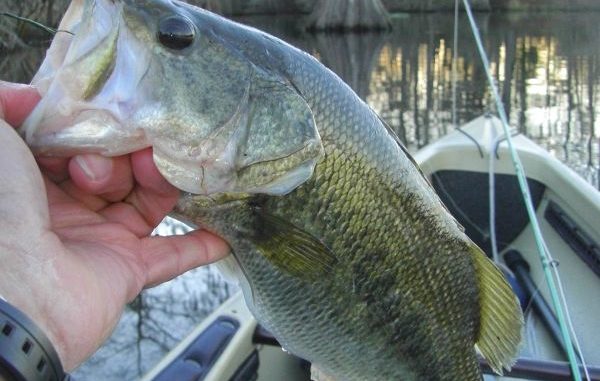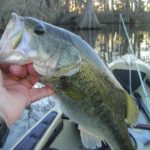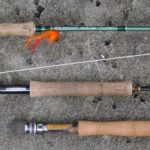
One of my favorite car commercials has a 5-year-old driving his Power Wheels toy car. His dad asks if he’d like to take a try with the bigger automobile. After giving it some thought, the kid realizes it’s too much to handle and responds “No, thanks. I can wait.”
That’s probably how my younger son Jake felt when he was 6 years old and I gave him a fly rod to use.
Jake struggled mightily with that rod. And after a few weeks, he decided he wouldn’t be doing any more fly fishing.
I suspected the problem was with the rod. It was a 9-foot, 6-weight, and even though it was graphite, back in 1993 graphite rods were much heavier than they are today.
My suspicion was confirmed several months later when we attended the annual Acadiana Conclave in Lafayette. Bill Lambing from Lufkin, Texas, was giving casting lessons.
He took Jake aside and spent a couple hours with him. When they returned, Jake was as excited as I’d ever seen him.
“Watch this, Dad!” he said.
Jake made a couple of false casts, and then put out nearly 40 feet of fly line. His loops were tight and his form seemed effortless.
Bill turned to me and told me the secret: The rod Jake was using was only 7 feet long.
In fly fishing, there’s three important weights: “system weight,” “mass weight” and “swing weight.”
System weight refers to the stiffness of the rod and the actual weight of the first 30 feet of fly line that is needed to load the rod. The higher the weight, the stiffer the rod, the heavier the fly line that is required.
The mass weight is the actual weight of the rod.
The swing weight is the proportion of the mass weight of the rod — and line — to the length of the rod. If the rod taper is very light at the tip and heavy at the butt, the swing weight is low. Likewise, if the rod is shorter, the swing weight is low.
The reason Jake was able to master his cast was because of the much lower mass weight and swing weight that a shorter rod offers. Instead of struggling to even hold the rod, he was able to use his limited strength to control the cast.
Even adults can benefit from a shorter rod.
There are reasons why most fly rods are 9 feet long — and sometimes longer. Longer rods cast farther. They also allow for better line management on the water, for example, mending line on a moving stream.
But short rods have their advantages. In addition to lower swing weight, they give more casting control, can be used under canopies, and have the ability to place a fly in tight spots.
And then there’s lifting power. When it comes to getting a big fish out of grass or timber, an 8-foot rod is a better lever than a 9-footer.
There’s one group that really loves the advantages of a short rod — bass anglers.
With all the emphasis on distance, it had been very rare to find rods in system weights 6 through 10 any shorter than 9-feet. But that’s changing.
Several years ago, Sage came out with their Bass Series fly rods. They were described as “tournament legal,” referring to regulations in the BASS tournaments that prohibit rods longer than 8 feet.
Each of the rods was 7-feet, 11-inches in length.
The Bass Series was an instant hit among kayak anglers and folks who wade smallmouth streams. Other companies such as TFO, Ross, Scott, Bass Pro and Loomis quickly followed suit with offerings in the 7-11 length.
And the list continues to grow.
For 2016, St. Croix has introduced their Mojo Bass Series fly rods ranging from 7-weight to 9-weight. Orvis has added three 7-11 rods to their popular Hydros series, with models ranging from 8-weight to 10-weight. All come with lifetime warranties.
It’s not just the shorter length that makes a good bass rod. Most are built differently, too. They have softer tapers for casting large, wind-resistant flies, and a heavier butt section for increased lifting power.
Unfortunately, to this date no pro bass angler has ever won a tournament using a fly rod.
This should not be a knock against fly rods — especially bass sticks. I’ve fished a few tournaments using fly rods and done very well. But pro anglers aren’t out to “do well;” they’re out to win.
The versatility of a spinning rod will always beat out a fly rod, even if the fly rod can sometimes have the advantage.
Besides, only a handful of pros have ever cast a fly rod. Shaw Grigsby is one of those, and if any pro were to win a tournament on a fly stick, my bet would be on him.
I’ve spent my entire life on the water or within a short walk from a lake. Bass and bream fishing is in my blood. I can attest that the short rods have made a difference in my success with the green trout.
Give a bass rod a try and I think you’ll be a convert.




